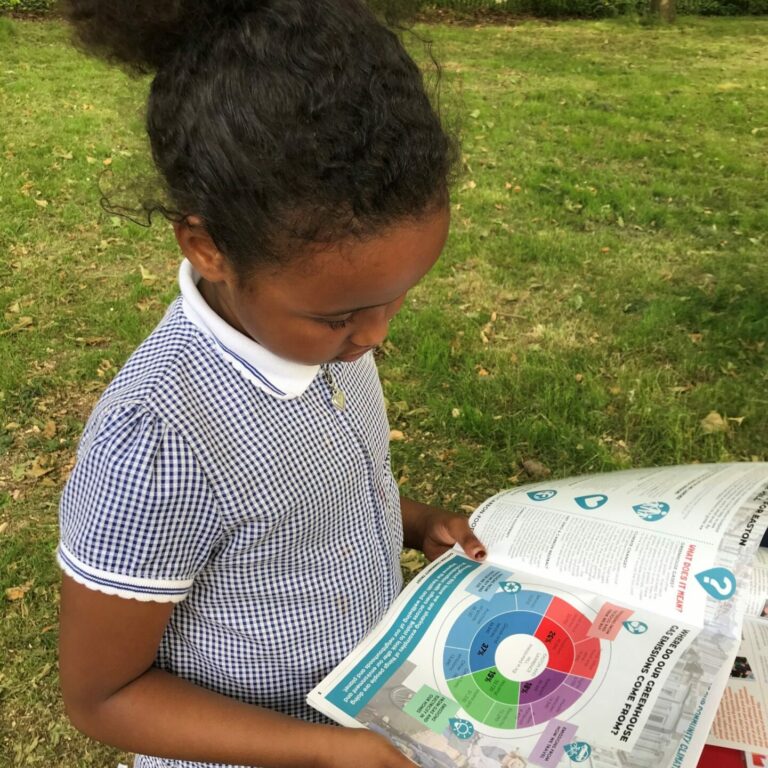Using community carbon footprints to support climate action
Bristol’s Community Climate Action Project is supporting six community organisations from across Bristol (Ambition Lawrence Weston, ACH, Bristol Disability Equality Forum, Eastside Community Trust, Heart of BS13 and Lockleaze Neighbourhood Trust) to play a leading role in shaping Bristol’s transition to a low carbon and climate resilient city.
The community organisations are spending the summer months engaging with their communities to support the coproduction of community climate action plans. These plans will outline each community’s key priorities for improving the quality of life for local residents, whilst also reducing carbon emissions.
But where do these community organisations start on their community climate action journey? As with every challenge, it helps to get an accurate understanding of the current situation. So, to support the production of their plans, the Centre of Sustainable Energy (CSE) has produced a detailed baseline carbon footprint for each of the communities. These footprint reports shows them which consumption activities that their residents engage in are responsible for emissions and to what scale, organised under the following themes: housing; transport; food and diet; goods and services; and waste management.
The carbon footprint reports are an innovative way of supporting community level climate action. Earlier this year CSE and partners launched Impact, a tool providing high level carbon footprinting for civil parishes. However collating this data for inner city electoral ward communities and demographic communities, for example Disabled people or a refugee community within a city, is an approach being pioneered through the Community Climate Action Project

Having an understanding of the activities responsible for carbon emissions and to what extent, helps to identify which key areas of change are most needed to reduce emissions and create positive change. It also reveals where change can be made by individuals and by communities, and where broader systemic change is required – at the city, national and global levels. The Community Climate Action Project is a fantastic opportunity to explore the role that data can have in supporting and guiding community climate action. The lessons learned from this will help CSE and others working at this ‘data-community climate action’ interface to improve their methods, and lessons learned will be shared with community groups across the UK through the National Lottery’s Climate Action Fund.
What next?
The six community organisations are now exploring how to integrate the information in their carbon footprints into their community engagement activities. This process is raising a variety of questions:
- How can the footprint results be communicated in a way which is meaningful and accessible?
- Which methods of communication, and which messages, will resonate the most with different members of the community? (and why?)
- Whilst the footprint reports may guide activity towards one area of climate action (eg. food consumption, travel) residents may be more inspired to act on other environmental issues, such as plastic waste – how will this mismatch be resolved?
These questions will be explored through the first phase of the Bristol Community Climate Action Project and the insight gained will be captured and shared through future events and resources.
“The Community Climate Action Project is a unique opportunity for us to explore the role that information and data, showing us the key areas responsible for carbon emissions, can play in community level climate action. We are already learning a lot about where data plays a critical role – and where it doesn’t! If I want to engage my neighbour in climate action, I don’t show them numbers, I tell them stories. This learning will continue, and we look forward to using the lessons learned from this project in the work we do going forward, working with communities to help them identify their key carbon emission areas and where to take effective climate action at a community level.”
Harriet Sansom, CSE
Eastside Community Trust – one of the six community partners – has started to explore this communications and engagement challenge! It has dedicated much of its most recent magazine, Up Our Street, to the project and the results of the carbon footprint report.

Eastside Community Trust
“It is really useful for us to understand what areas of life are having the biggest impact in our community in terms of carbon emissions, and to know where the biggest wins can be had in terms of reducing carbon and taking climate action at a community level as we start to engage with our community.”
Emily Fifield, Eastside Community Trust
The Bristol context
The communities’ activities also sit within the broader Bristol context of the city having committed to reducing its emissions to ‘net zero’, and becoming a climate resilient city, by 2030. Bristol’s One City Climate Strategy outlines how this 2030 goal can be achieved, and is a ‘call to action’ to all stakeholders across the city to help make this a reality. And it is a bold and ambitious ‘call to action’. The role and impact of community hub organisations has been exemplified through the community level covid response which has supported the city. This has highlighted the critical role community organisations can play in key city challenges such as climate change.
“The community organisations who are part of the community climate action project represent the broad diversity of the demographic of Bristol. To ensure our transition to carbon zero is an equitable one, organisations such these will play a critical role in ensuring a just transition which also improves the quality of life for residents in our city.”
Amy Harrison
Bristol Green Capital Partnership
Share to
